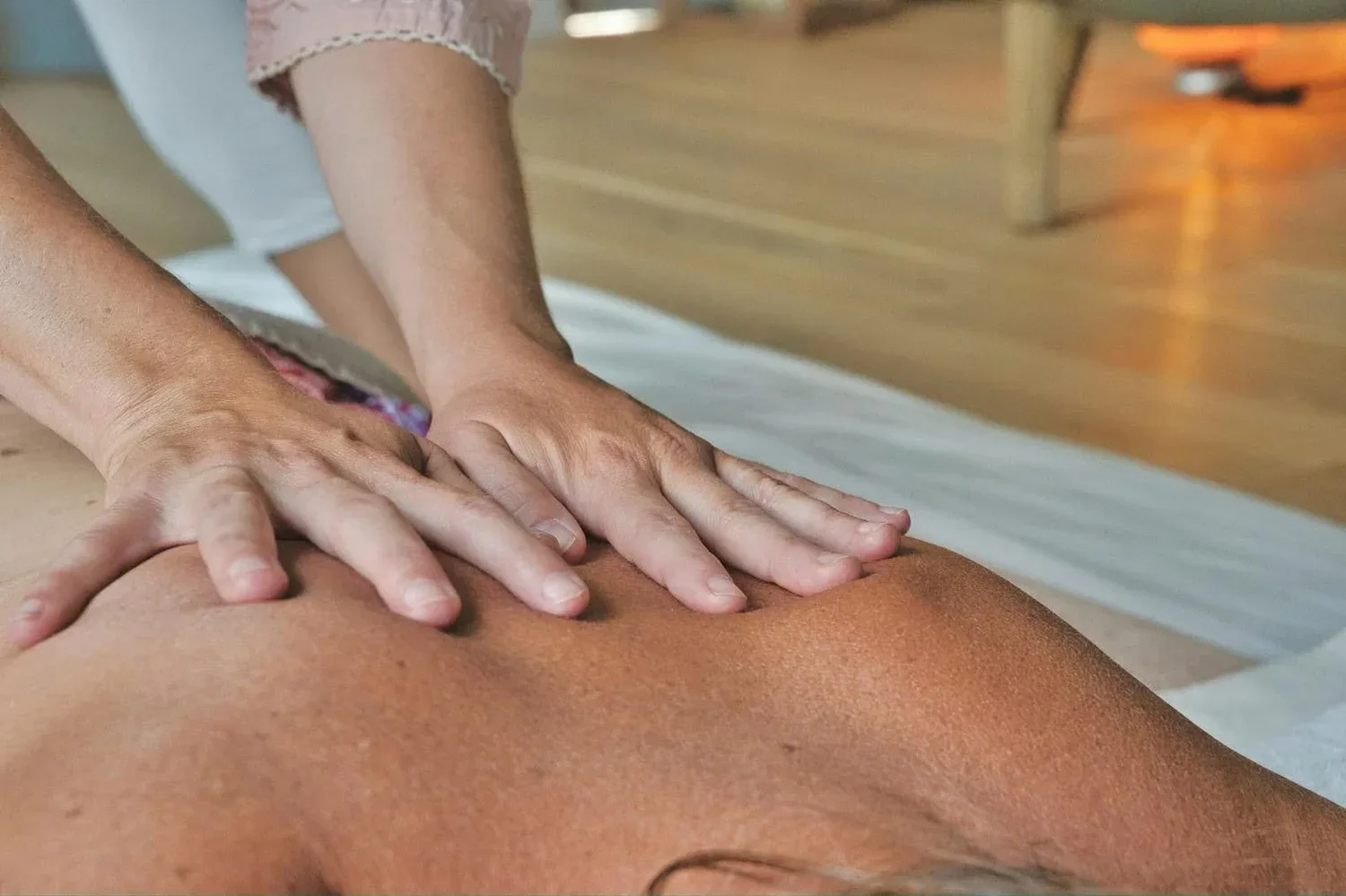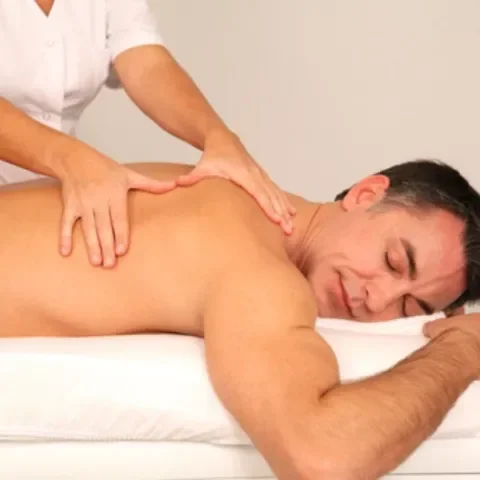A Simple Guide to the Different Types of Massage
Key Takeaways:
Massage Types and Benefits: Learn how various types of massage – like Swedish, deep tissue, and sports massage – cater to specific physical and emotional needs.
Choosing the Right Massage: Understand what to consider when selecting the best massage technique for your body and lifestyle.
Experience PRESS Massage Studio: Get introduced to PRESS, a professional massage studio offering personalized sessions to support overall wellness.
Massage therapy isn’t one-size-fits-all. Each massage type offers something unique, from soothing Swedish strokes to targeted deep tissue work. But if you’re new to massage or unsure what fits your goals, it can be hard to know where to begin.
At PRESS, we’ve helped thousands of New Yorkers reconnect with their bodies through science-based massage therapy that delivers lasting results. Our licensed massage therapists don’t just go through the motions – they apply advanced techniques tailored to your needs, whether you’re managing pain, recovering from a workout, or simply carving out space to recharge.
This guide breaks down several common massage styles to help you make an informed choice that works with your lifestyle, preferences, and wellness journey.
Why People Choose Massage Therapy
Massage therapy has been used for centuries to support physical and mental well-being. Today, more people than ever are turning to massage for relaxation and as part of a proactive approach to health.
Whether it's to relieve stress after a long week, ease muscle soreness from workouts, or address chronic pain issues, massage offers benefits that cater to a wide range of needs. Many individuals incorporate it into their regular self-care routines, viewing it as a necessary reset for body and mind.
Massage can also help improve circulation, increase flexibility, and support better sleep. With so many styles, there’s a massage approach suited for nearly everyone, making it a versatile solution for modern wellness.
Swedish Massage: Gentle and Relaxing
Swedish massage is one of the most well-known and widely practiced types. It’s ideal for anyone new to massage or seeking a soothing, calming experience.
This technique uses long, gliding strokes, kneading, and circular movements on the upper layers of muscles. It helps to increase oxygen levels in the blood, improve circulation, and ease tension throughout the body. Unlike more intense styles, Swedish massage promotes general relaxation rather than targeting deep muscle layers or specific pain points.
Clients often leave a Swedish massage session feeling more grounded and less anxious, making it an excellent choice for stress relief or unwinding after a demanding day.
Deep Tissue Massage: Targeting Chronic Tension
Deep tissue massage is designed for persistent muscle tightness, soreness, or injury recovery. Unlike Swedish massage, this technique applies slower, more forceful strokes that reach deeper muscle and connective tissue layers.
It benefits individuals who experience chronic pain in the neck, shoulders, lower back, or legs. By targeting the root of muscle tension, deep tissue massage can break down adhesions – known as “knots” – and improve mobility over time.
While some discomfort may occur during the session due to the intensity, many find the long-term benefits well worth it. It’s a popular option among athletes, desk workers, and anyone needing therapeutic relief from deeply held tension.
Sports Massage: For Active Bodies
Sports massage is tailored to the unique needs of people who lead active lifestyles. Whether you're a professional athlete, weekend runner, or simply someone who enjoys staying physically active, this massage style can support performance and recovery.
Techniques used in sports massage vary depending on the client’s activity level and goals. It may involve a combination of deep pressure, stretching, and joint mobilization to help reduce muscle soreness, enhance flexibility, and prevent injury.
This type of massage is often used before or after workouts to warm up muscles or aid in recovery. It can also be beneficial for managing repetitive strain or overuse injuries, which are common in sports and physical training.
Trigger Point Massage: Releasing Knots
Trigger point massage focuses on specific areas of tight muscle fibers that can form after injury or overuse. These sensitive spots – often called "knots" – can cause pain in other parts of the body, a phenomenon known as referred pain.
During a session, the massage therapist applies concentrated pressure to these trigger points to help release tension and restore normal muscle function. This targeted and effective method can address chronic muscle pain, headaches, or even restricted range of motion.
Although the pressure may sometimes feel intense, many clients experience noticeable relief and improved movement after treatment. It's a practical choice for those who want to work on particular problem areas rather than receiving a full-body massage.
How to Choose the Right Massage for You
Finding the perfect massage starts with knowing what your body needs and how different techniques work. Here’s how to make an informed choice that fits your goals and lifestyle:
Define Your Wellness Goals
Start by identifying what you want to get out of the massage. Are you seeking relaxation, stress relief, recovery from an injury, or help with chronic pain? Your purpose will shape the best style for your session. For example, stress relief often calls for Swedish massage, while muscle recovery might require something more profound, like sports or deep tissue massage.
Understand the Techniques
Each massage style uses distinct techniques. Swedish massage involves long, flowing strokes ideal for calming the nervous system. Deep tissue and trigger point massages apply firmer pressure to address muscle knots or tension patterns. Understanding the differences can help you match the method to your needs.
Consider Your Activity Level
Your daily routine matters. If you’re regularly active – whether through sports, gym sessions, or physically demanding work – a sports massage may help you stay limber and prevent injury. Less active individuals may lean toward general relaxation or gentle tension relief.
Communicate With Your Therapist
Always be upfront about any injuries, health concerns, or areas of discomfort. A skilled therapist will adjust their approach based on your input. Don't hesitate to ask questions or speak up if something feels uncomfortable during the session.
Try Different Styles
Sometimes the best way to find your ideal massage is to try a few. Massage therapy isn’t one-size-fits-all, and what works for one person may not work for another. Be open to experimenting with different techniques until you discover what helps you feel your best.
Experience Professional Massage at PRESS
When you're ready to explore the benefits of massage therapy, choosing the proper environment is key. PRESS is a modern massage studio that offers expert care in a welcoming, professional setting. Our licensed massage therapists specialize in various evidence-based techniques to help you relax, recover, and feel your best.
If you're new to massage and looking to address specific needs, PRESS makes it easy to start. You can book your session online and select from a thoughtfully curated list of services supporting physical and mental well-being.
A personalized massage experience awaits – designed with real people and real life in mind.
Final Thoughts
Massage therapy offers more than just a moment of relaxation – it’s a meaningful investment in your overall well-being. There's something for everyone with various techniques available, from the gentle flow of Swedish massage to the focused relief of deep tissue or trigger point work.
Understanding your body’s needs and exploring different massage styles can lead to better physical health, reduced stress, and improved quality of life. PRESS welcomes both those just starting out on their wellness journey and more experienced people looking to deepen their wellness routine.
Read also:
Frequently Asked Questions About the Different Types of Massage
What is the main difference between relaxation massage and therapeutic massage?
Relaxation massage promotes calmness and eases tension without focusing on deep muscle layers or specific problem areas. On the other hand, therapeutic massage targets muscle dysfunction, pain relief, or recovery through techniques like deep tissue or trigger point therapy.
Can I combine different massage techniques in one session?
Yes, many therapists offer integrative sessions that blend styles like Swedish, deep tissue, and sports massage. Be sure to communicate your needs beforehand so your therapist can tailor the approach accordingly.
Is massage therapy safe for people with chronic illnesses?
In many cases, yes. Massage can support those with chronic conditions like arthritis, fibromyalgia, or migraines. Consult with a healthcare provider and inform your therapist about your medical history before beginning treatment.
How often should I get a massage?
Frequency depends on your goals. For general well-being, once or twice a month may be sufficient. Those using massage for pain management, recovery, or stress relief might benefit from weekly sessions, especially in the short term.
Do I have to undress completely for a massage?
Not at all. Your comfort is what matters most. You are encouraged to undress only to the level that feels right for you. Massage therapists are professionally trained in draping techniques to ensure your privacy and help you feel safe, secure, and respected throughout the session. If you ever have questions or concerns, feel free to share them—your therapist is there to support you.
Are there any side effects of massage therapy?
Some people experience mild soreness, fatigue, or lightheadedness after a massage, especially after deep tissue work. Staying hydrated and resting after your session can help ease these effects.
Can massage therapy improve posture?
Yes, specific massage techniques help release tension in postural muscles, realign the body, and increase body awareness, leading to better posture over time.



